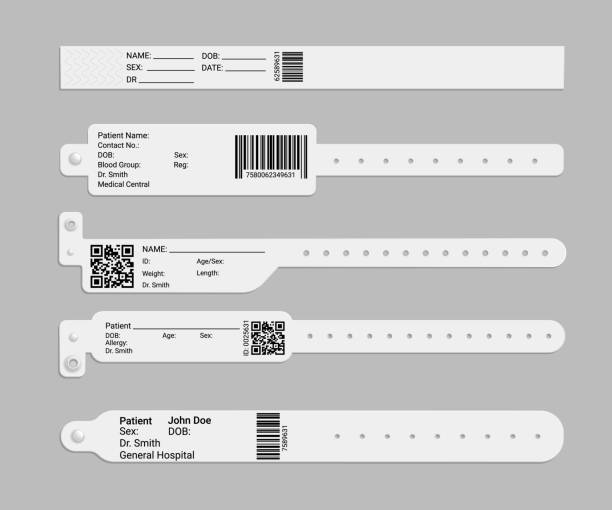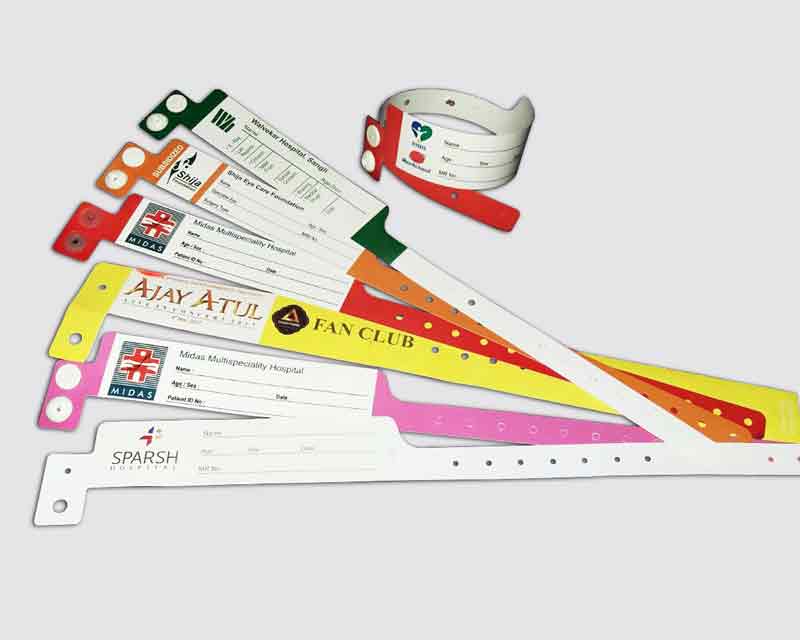How a Patient Identification Band Can Help Prevent Patient Misidentification in Healthcare Settings
How a Patient Identification Band Can Help Prevent Patient Misidentification in Healthcare Settings
Blog Article
Exploring the Different Types of Patient Identification Band Used in Clinical Facilities
In the complex globe of healthcare, the vital function of Patient Identification bands often goes unnoticed. These bands, differing from easy paper wristbands to sophisticated RFID bands, develop the foundation of Patient safety protocols, ensuring accuracy in Patient Identification. The vast diversity of these bands, each with its unique benefits and restrictions, is typically neglected. As we navigate with this topic, one might gain understanding into the subtle complexities and important relevance of such bands in clinical facilities.
Understanding the Value of Patient Identification Bands
While they might look like plain devices, Patient Identification bands play a crucial role in medical centers. These bands serve as a vital tool for confirming Patient identity, avoiding clinical mistakes associated with misidentification. The bands normally present important information such as the Patient's name, age, blood kind, and any kind of known allergic reactions. They permit medical care professionals to rapidly access this important information, consequently helping with precise and prompt medical therapy. Patient Identification bands also aid in simplifying administrative jobs, making certain exact record-keeping and billing. Regardless of their simplicity, these bands personify the principle of Patient security, a cornerstone of top quality wellness care. Without them, the risk of clinical mistakes, and subsequently, Patient harm, could considerably enhance.
Standard Paper Wristbands: Their Use and Limitations
Typical paper wristbands have been a staple in Patient Identification across various clinical facilities. While their use is prevalent, they harbor specific restrictions that might affect their efficiency in Patient management. This area will concentrate on the extent of their application and the fundamental disadvantages related to their usage.
Paper Wristbands: Use Scope
In the realm of Patient Identification, paper wristbands have actually long held an essential function. These bands are generally made use of in outpatient settings, where the Patient's keep is temporary. Regardless of innovations in technology, the simple paper wristband remains a reliable and cost-effective remedy for Patient Identification in numerous medical care situations.
Limitations of Paper Wristbands
Regardless of their prevalent use, paper wristbands are not without their disadvantages. Their physical longevity is one of the considerable restrictions. Exposure to water, sweat, or rough handling can make them unreadable or even cause them to break down. Additionally, paper wristbands often lack the technical capabilities of more modern alternatives, such as barcoding or RFID chips, limiting their performance to merely displaying written information. The failure to update or modify the information on the wristband is another shortcoming. In addition, if the information is handwritten, readability can be jeopardized, resulting in prospective misidentification. Paper wristbands can trigger discomfort or skin inflammation to some people, specifically when used for prolonged periods.
Barcoded Wristbands: Advancements in Patient Identification
While Patient Identification has long been a crucial facet of health care, the advent of barcoded wristbands signifies a significant leap ahead. These bands take advantage of the simpleness of barcoding modern technology, permitting for Patient info to be swiftly checked and accessed. They enhance the rate and accuracy of Patient Identification, minimizing the danger of medical mistakes related to misidentification.
Radio Frequency Identification (RFID) Bands: a Step In The Direction Of Futuristic Healthcare
The development of Patient Identification bands has produced the appearance of Radio Regularity Identification (RFID) Bands (patient identification band). These cutting-edge devices existing essential benefits for medical care facilities, offering a much more reliable and technically progressed methods of Patient Identification. The execution of RFID in health care is a significant step in the direction of a more advanced approach to Patient management and safety click over here and security
Comprehending RFID Bands

RFID Bands: Trick Benefits
Primarily, these bands enhance Patient safety and security by offering precise, immediate Identification, consequently reducing medical errors. RFID bands can keep a substantial amount of Patient data, consisting of medical history and allergies, allowing individualized care. Overall, RFID bands stand for a substantial innovation in Patient Identification technology, profiting both individuals and medical care providers.
Carrying Out RFID in Healthcare
As we step right into a technologically innovative period, the implementation of RFID bands in healthcare comes to be progressively essential. These bands provide a smooth way to track and determine individuals, guaranteeing their safety and boosting performance in treatment procedures. RFID bands provide numerous advantages over traditional Identification techniques. They can save a huge quantity of data, including the Patient's case history and therapy strategies, which can be conveniently accessed by doctor. This data helps doctors make educated decisions pertaining to the Patient's treatment plan. RFID bands minimize clinical errors by giving exact Patient Identification, which is essential in avoiding misdiagnosis or incorrect medicine administration. Therefore, the execution of RFID bands is a significant action in the direction of improving Patient safety and healthcare delivery.

Color-Coded Wristbands: Helping in Quick and Accurate Medical Diagnosis
In the busy environment of a medical facility, color-coded wristbands Extra resources have actually become vital devices for swift and specific Identification of an individual's medical condition. These wristbands, put on by clients, carry particular colors that correspond to various clinical problems or conditions. Red could suggest allergic reaction dangers, while yellow may symbolize a fall threat. This system is developed to use prompt aesthetic hints to medical care suppliers, boosting Patient safety and care quality. In emergency situations, the use of these wristbands enables for quick decision-making. Nevertheless, the efficiency of color-coded wristbands depends upon the uniformity of color analysis throughout medical care establishments, calling for typical requirements for regular application.
Approaches for Efficient Application and Monitoring of Patient ID Bands
Attaining ideal usage of Patient Identification bands necessitates a well-structured method for their application and management. Patient education and learning is also important; people have to recognize the purpose of the a knockout post bands and the need for their continuous wear. It's necessary to have a back-up strategy in place, such as barcode scanning or biometrics, to guarantee that Patient Identification is never compromised.
Final thought
Patient Identification bands are vital in clinical centers to ensure security and precision. Standard paper, barcoded, RFID, and color-coded wristbands each hold special advantages, varying from cost-effectiveness to sophisticated data storage space and instant medical signals. Effective execution and administration of these bands can significantly lower clinical mistakes, increase performance, and enhance general Patient treatment. Hence, understanding and utilizing these Identification devices is extremely important for keeping high criteria in healthcare.
These bands, varying from straightforward paper wristbands to advanced RFID bands, develop the backbone of Patient security methods, guaranteeing precision in Patient Identification.The development of Patient Identification bands has actually brought regarding the development of Radio Regularity Identification (RFID) Bands. On the whole, RFID bands stand for a considerable improvement in Patient Identification innovation, profiting both clients and health care providers.
RFID bands lower medical errors by providing exact Patient Identification, which is important in protecting against misdiagnosis or wrong medication administration. Patient education and learning is also crucial; patients need to recognize the function of the bands and the need for their consistent wear.
Report this page